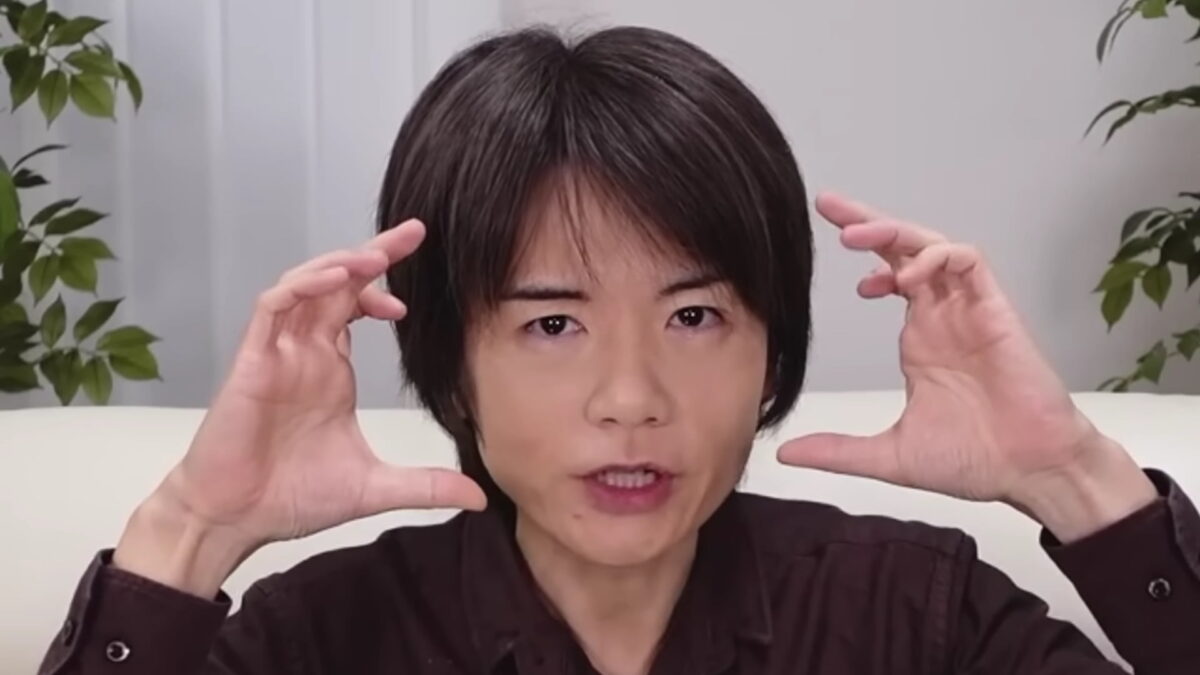Smash Brothers creator turned down Oculus offer

The creator of Kirby and Smash Brothers explains the advantages of virtual reality in game design. Although he has been interested in VR for years, he has yet to release a VR game. He even turned down an offer from Oculus.
Masahiro Sakurai created Kirby and Super Smash Bros, two of Nintendo's most successful franchises. As a nineteen-year-old, he led the development of Kirby's Dream Land for the Game Boy in 1992. Since 2005, Sakurai has run his own studio, Sora Ltd., with which he has developed exclusive titles for Nintendo consoles, among other things.
In 2015, the experienced developer almost created a VR game for Oculus. Now he shares the pros and cons of game development and why VR is perfect for racing games.
Content
Screens unnaturally restrict the field of vision
This summer, Sakurai launched his YouTube channel, where he shares his experiences as a game developer and explains the basics of game design. He mainly targets interested people who want to dive into game development without much prior knowledge.
In his video "A Small Window Into the World," Sakurai explains why racing games in particular are ideal for virtual reality. The problem with these types of games, he says, is that they never really feel real on a normal screen.
"No matter how great your graphics and simulation are it'll never feel like you're actually driving," Sakurai says. That's mainly because of how small screens are, he says.
Sakurai explains it this way: When console gamers sit in front of the TV, their field of view of the screen is limited to about 30 degrees. The human field of vision, however, is much larger. For adults, it is about 214 degrees horizontally.
Cockpit perspective is often neglected
"In games, a wider field of view is condensed into that narrow window, but that brings its own conflicts," Sakurai said. Developers would always need to be aware of how much space the simulated field of view takes up on the screen so as not to confuse game players.
For racing games, a cockpit perspective would probably feel the most realistic. Most developers instead lean toward the third-person perspective, which limits screen space and thus playability and gameplay, Sakurai says.
Sakurai also points to the view through the digital windshield, where all the action is compressed unnaturally, making gameplay more difficult.
Lack of resolution in VR headsets can be an obstacle
According to Sakurai, one solution to this problem is VR gaming. Current VR headsets have fields of view between 95 and 200 degrees, which is significantly more than the 30-degree field of view Sakurai mentions on a monitor. But there are obstacles here as well.
"You could try playing VR instead, but the lower resolution will make distant objects too blurry to really see." This is problematic because players actually want to see more of the environment from the VR cockpit, Sakurai says.
VR headsets do not yet achieve the level of detail that, for example, powerful 4K screens can offer. Common consumer models, such as the Meta Quest 2 or Pico 4 mobile VR headset, achieve resolutions of up to 2,160 x 2,160 pixels.
High-end VR headsets like the Varjo Aero reach 2,880 x 2,720 pixels. Other factors for a clear picture are the lenses used and the type of display. Still, there is of course more to an immersive gaming experience than high resolution and sharpness of detail.
VR is the perfect solution for racing games
Despite the higher field of view and increased immersion, Sakurai sees another obstacle in the development of VR racing games. He says VR headsets create an unnatural motion compared to real driving in the physical world.
"When you drive in real life, you can just glance sideways. But in VR, you can only do that if you turn your whole head," Sakurai said. Motion sickness also needs to be considered, he added.
Still, Sakurai recommends aspiring developers look past these drawbacks and at least try VR racing games. For games where the point of view and the direction of travel are separate, VR is the perfect solution, he said.
Sakurai refused to develop VR games for Oculus
Although Masahiro Sakurai has yet to release a VR game himself, the developer has been involved with the technology since the early days of the current VR phase. In a column Sakurai published for the Japanese gaming magazine Famitsu in 2013, he spoke positively about the then burgeoning VR startup Oculus.
A year later, he shared his ideas for the medium and how current games could benefit from VR in another article. Oculus founder Palmer Luckey then took notice of Sakurai. As author Blake J. Harris reports, writing about the founding of Oculus in his book "The History Of The Future," there was almost a collaboration with Sakurai.
Luckey and Sakurai would have met in Tokyo in 2015. The Oculus CEO at the time reportedly offered Sakurai work on a VR game with complete creative control and generous pay. Ultimately, however, the star developer declined. He would give his all in such a project, but the target group for Oculus was simply too small, which could limit the game's distribution.
Note: Links to online stores in articles can be so-called affiliate links. If you buy through this link, MIXED receives a commission from the provider. For you the price does not change.